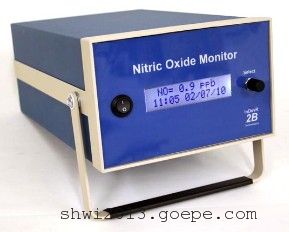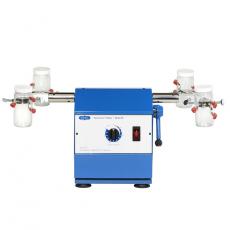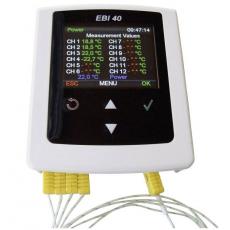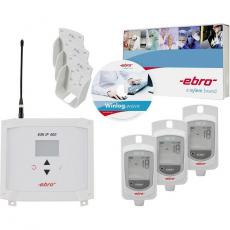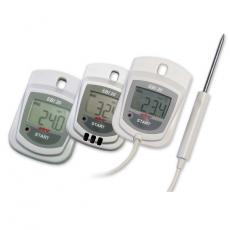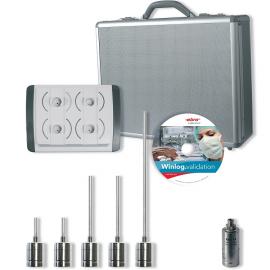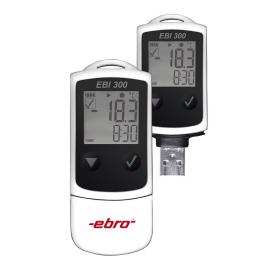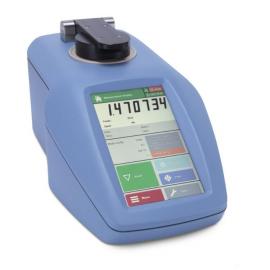- Model 410一氧化氮监测仪
详细信息
品牌:美国2B Tech 型号:Model 410一氧化氮监测仪 加工定制:否 Model 410一氧化氮监测仪:
The Model 410 Nitric Oxide Monitor™ is designed for the measurement of atmospheric nitric oxide (NO) in the concentrtion range 0-2,000 ppb (0-2 ppm) with a precison of ±1.5 ppb. When used in combination with the Model 401 NO2 Converter, NOx and NO2 (by difference) are also measured. The detection principle of the Model 410 is based on the selective reaction of NO with ozone. The resulting ozone depletion is measured using the absolute method of UV absorbance and thus requires only infrequent calibration. By comparison, chemiluminescence NOx instruments require nearly continuous calibration using a standard gas.
The Model 410 Nitric Oxide Monitor™ Theory of Operation
The NOzone™ technology employed by the Model 410 Nitric Oxide Monitor™ is based on the quantitative reaction of nitric oxide (NO) with ozone (O3):
NO + O3 → NO2 + O2 + light (1)
This reaction has long been used as a gas phase titration for the measurement of either NO or O3 in laboratory kinetics experiments, and the reaction is stoichiometric; i.e., one O3 molecule is consumed for every NO molecule oxidized to NO2 in the reaction. In the Model 410 Nitric Oxide Monitor™, a small concentration of ozone (~4 ppm) is added to the gas sample stream and the resulting decrease in concentration of ozone is measured by the absolute method of UV absorption. By providing adequate time for the reaction to go to completion, the decrease in ozone concentration is equal to the original concentration of NO in the gas stream.
Reaction 1 also is used in conventional chemiluminescence analyzers. Instead of measuring the change in ozone concentration, chemiluminescence detects the small amount of light produced in the reaction. That light is emitted by electronically excited NO2 molecules formed in reaction 1. Chemiluminescence instruments are highly sensitive and have a very fast response time, but require frequent calibration using a gas standard.
Figure 1 is a schematic diagram of the Model 410 Nitric Oxide Monitor. Here we trace the gas flow through the instrument beginning at the Air Inlet near the bottom of the diagram.
Fig. 1. Schematic diagram of the Model 410 Nitric Oxide Monitor.A miniature air pump, the Sample Pump, draws sample air into the instrument and through a proprietary heated ozone scrubber at a flow rate of ~0.8-1.2 L/min. The air sample then passes through a miniature solenoid valve which alternately directs the flow through a NOx scrubber or bypass. The flow then passes through a Nafion tube, a flow meter and into an overflow tee which vents part of the air sample. The Nafion tube equilibrates the humidity of the sampled air with that inside the instrument case, assuring that the humidity is the same in NO-scrubbed and unscrubbed air. The Total Flow Pump (top of diagram) draws air from the overflow tee, and through the detection cell. A bleed valve, the Total Flow Adjustment Valve, is used to provide adjustment of the total flow rate through the detection cell. Following the sampling tee, a small flow of 20-30 cc/min of ozonized air is added to the sample air stream. The flow rate of ozone/air is adjusted by use of the Ozone Needle Valve, and is set to produce an ozone concentration in the range of 3.5-4.5 ppm (3,500-4,500 ppb).
The sample air, either NO-scrubbed or unscrubbed, containing the added ozone next passes through a coiled reactor, which provides adequate reaction time (~3 s) for nearly all NO in the sample to react with ozone via reaction (1) above. Correction is made in the software for lack of complete reaction. That correction is typically less than 3%. Next the sample air passes through the Detection Cell where UV light intensity is measured. The air stream then passes through an Ozone Scrubber where O3 is catalytically converted to O2, through an NO2 scrubber to remove the NO2 produced in reaction (1), through the Total Flow Meter where the flow rate is measured, and into the instrument case.
Ozone is produced by pumping ambient air through a chamber containing a low pressure mercury lamp. The lamp has a fused silica window that passes highly energetic atomic emission near 185 nm in addition to the resonant emission at 254 nm. The wavelengths near 185-nm are absorbed by molecular oxygen (O2) to produce oxygen atoms (O). Those oxygen atoms rapidly attach to O2 via a termolecular reaction to form O3.
O2 + photon → 2 O (2)
O + O2 + M → O3 + M (3)
Here, the photon has a wavelength near 185 nm, and M is any molecule, principally N2, O2, Ar and H2O, in air. The molecule M catalyzes the combination of O and O2 by removing excess relative translational energy. The flow rate of ozone/air and thus the ozone concentration is controlled by the Ozone Needle Valve. Flow rates and the actual ozone concentration produced are measured in a cycle at the beginning of an analysis by modulating the Ozone Solenoid Valve. This valve either allows the ozone/air mixture to enter the stream of gas being analyzed or diverts it through an ozone scrubber.
NO is measured by modulating the NO Solenoid Valve. A low-pressure mercury lamp is located on one side of the absorption cells, and a photodiode is located on the opposite side. The photodiode has a built-in interference filter centered on 254 nm, the principal wavelength of light emitted by the mercury lamp. Shorter wavelengths of light that could produce ozone are absorbed by the low-grade quartz envelope of the lamp itself and by the window of the detection cell, which passes 254-nm but not 185-nm light. The state of the NO Solenoid Valve is switched every 10 seconds in order to measure light intensities for sample air, I, and scrubbed sample air, Io. The values of I and Io are used to calculate the concentration of NO in the original air sample. In addition to a small correction for incomplete reaction, a correction is made for the small amount of dilution of the NO concentration by the added ozonized air.
The Model 410 Nitric Oxide Monitor™ Specifications
Measurement PrincipleTitration of NO with Ozone with Detection of Ozone Depletion by UV Absorption at 254 nm Precision and AccuracyHigher of 1.5 ppb or 2% of readingData Storage14,336 lines (10 s avg. = 1.4 days; 5 min avg = 1.4 mo.)Time/Measurement10 s (Data averaging options: 10 s, 1 min, 5 min, 1 hr)Sample Flow Rate1 L/minData OutputsRS-232, LCD, 0-2.5 V Analog, 4-20 mA Optional, Flash Card OptionalPower RequirementsTypical: 11.4 watt
Maximum: 22.3 watt (warmup)Size13.3 x 8.3 x 5.3 x in
33.7 x 20.0 x 13.3 cmWeight8.3 lb (3.7 kg) -
供应商的其他相关信息
查看更多
-

 上海君翼仪器设备有限公司18621801483上海君翼仪器设备有限公司 电话:021-67159386 手机:18621801483 地址: 上海市松江区广富林路4855弄大业领地79栋3层内容声明:谷瀑为第三方平台及互联网信息服务提供者,谷瀑(含网站、客户端等)所展示的商品/服务的标题、价格、详情等信息内容系由店铺经营者发布,其真实性、准确性和合法性均由店铺经营者负责。谷瀑提醒您购买商品/服务前注意谨慎核实,如您对商品/服务的标题、价格、详情等任何信息有任何疑问的,请在购买前通过谷瀑与店铺经营者沟通确认;谷瀑上存在海量店铺,如您发现店铺内有任何违法/侵权信息,请在谷瀑首页底栏投诉通道进行投诉。
上海君翼仪器设备有限公司18621801483上海君翼仪器设备有限公司 电话:021-67159386 手机:18621801483 地址: 上海市松江区广富林路4855弄大业领地79栋3层内容声明:谷瀑为第三方平台及互联网信息服务提供者,谷瀑(含网站、客户端等)所展示的商品/服务的标题、价格、详情等信息内容系由店铺经营者发布,其真实性、准确性和合法性均由店铺经营者负责。谷瀑提醒您购买商品/服务前注意谨慎核实,如您对商品/服务的标题、价格、详情等任何信息有任何疑问的,请在购买前通过谷瀑与店铺经营者沟通确认;谷瀑上存在海量店铺,如您发现店铺内有任何违法/侵权信息,请在谷瀑首页底栏投诉通道进行投诉。
 扫一扫,手机浏览
扫一扫,手机浏览